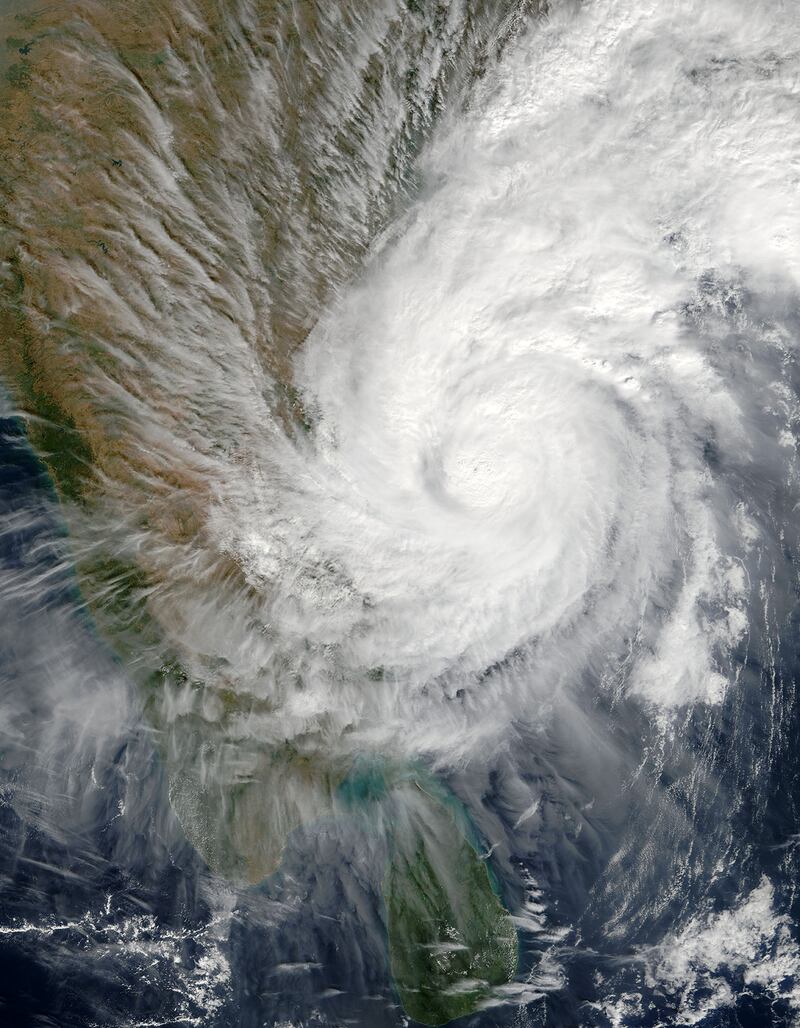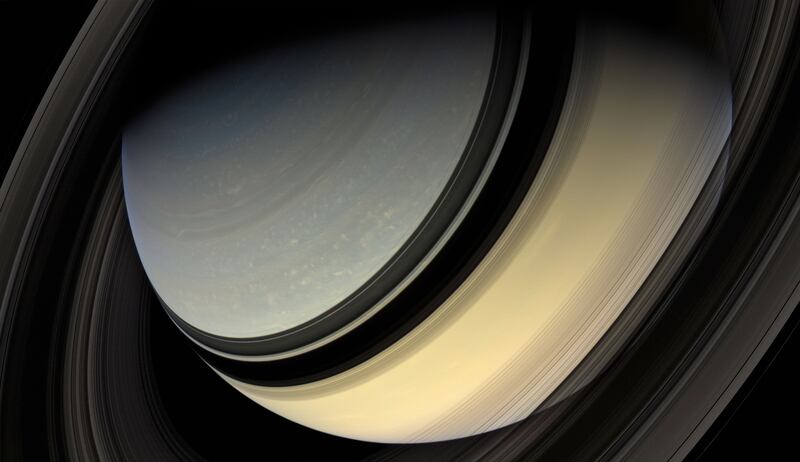LONDON — Marveling at Michael Benson’s visual genius is as close as you’ll ever get to exploring outer space.
More immersive than Gravity in IMAX 3D, his Otherworlds exhibition guarantees that you will be awed by the solar system’s vast celestial bodies.
Benson, an American artist, photographer, and author, has spent the last 15 years poring through the raw images captured by generations of space exploration vehicles and satellites to create some of the most detailed, full-color images of the planets ever experienced by the human eye.
Perhaps most stunning of these 6-foot by 6-foot creations are the images of our planet, which are among the highest resolution color images of Earth ever printed.
We’re all familiar with a blue-and-green marble floating in the blackness, but an image like Earth, with Hurricane and Sahara Dust, Goes West—part of the show at the Natural History Museum in London—is something of an altogether different order. Benson’s painstaking process knits together some of the most detailed telescopic, radar, satellite, and remote photography ever captured by spacecraft.
Images from as far afield as Pluto are included in the exhibition, but it’s the new perspective of our own planet that most excites Benson.

He told The Daily Beast that when he first figured out how to accurately add color to the extra high-definition black-and-white images of Earth captured by the two geosynchronous GOES weather satellites, it was a mind-blowing moment that brought life to the words of T.S. Eliot:
You shall not cease from exploration And the end of all our journeying Will be to arrive where we started And know the place for the first time.
“I was pretty astonished by the stunning detail,” Benson said. “You can certainly see how interconnected everything is, as for example a vast dust storm can be seen sweeping across the Atlantic from the Sahara towards the Amazon, while currents of air comb clouds into sweeping curves above the green jungles, and so forth. It produces a kind of ‘God’s-eye view’ effect. So it was pretty revelatory, and certainly changed how I think about the planet.”
Standing before these huge, detailed images will change the way anyone looks at the planet.
“I believe I’ve been able to coax the raw material into producing images revealing some pretty extraordinary things. I’m not alone in this, by the way, and don’t want to give the impression that I am; there are some superb image processors working with this material out there. But there have been a number of times when I kind of realized with a little jolt that I may be the first human being to see some of these vistas in the way they would look if we could actually go there ourselves,” Benson said.
Most of the other people working with these extraordinary raw materials are NASA and European Space Agency engineers or scientists looking to interrogate the information to prove or disprove their theories, but they are rarely thinking about ways to best share the new images with the public.
“They go in looking for their kind of discovery, and I go in looking for mine,” he said.

Although Benson was very clear with the Natural History Museum that this show was to be a visual art exhibition, not a pedagogical exercise, the institution’s scientists also found the images inspiring.
In an interview in the exhibition, Dr. Emma Humphreys-Williams shared Benson’s joy at the descriptive power of the images of Earth, including a work called Typhoon Over the Bay of Bengal.
“Looking at the typhoon I see the ultimate expression of a system that’s got more energy,” said the analytical chemist. “This climate change we see—we are putting more heat into the planet and that’s giving the system more energy.”
The vast swirling structure of the typhoon, seen in stunning, vivid detail, dwarfs entire cities—millions of people. The image is a stirring visual declaration of the turbulent power of nature being shaken by the impact of humanity.
Benson said he was keen to demonstrate man’s unwitting impact on Earth.
“I consciously included several images in the Earth section of the exhibition in which the effects of climate change, from slash-and-burn agriculture in Yucatan to dust storms and typhoons, can clearly be seen,” he said. “There’s an ethical dimension to the work, and not just in the Earth section.”
The rest of our solar system is depicted in ethereal majesty, from the familiar giant Jupiter to an extraordinary vision of Saturn’s rings from the planet’s night side.
One of the most surprising pictures shows Saturn’s moon, Enceladus. The image was captured as the sun illuminated its left side while the light reflecting off Saturn ensured that the dark side was also bathed in warm light.
The top of the moon appears to be erupting, as geysers of water are perfectly backlit by the distant Sun.
Benson believes that these images captured by robotic spacecraft since the 1960s deserve to be embraced as a key part in the history of visual art.
“I’m making the case that with the right curatorship, image processing, and presentation, the visual legacy of six decades of robotic space exploration constitutes an extraordinary new chapter in the history of photography,” he said. “And not just photography, but all graphic representation of phenomenal reality, really—from the cave paintings at Chauvet, to contemporary CGI.”
Otherworlds: Visions of Our Solar System is at London’s Natural History Museum until May 15.





